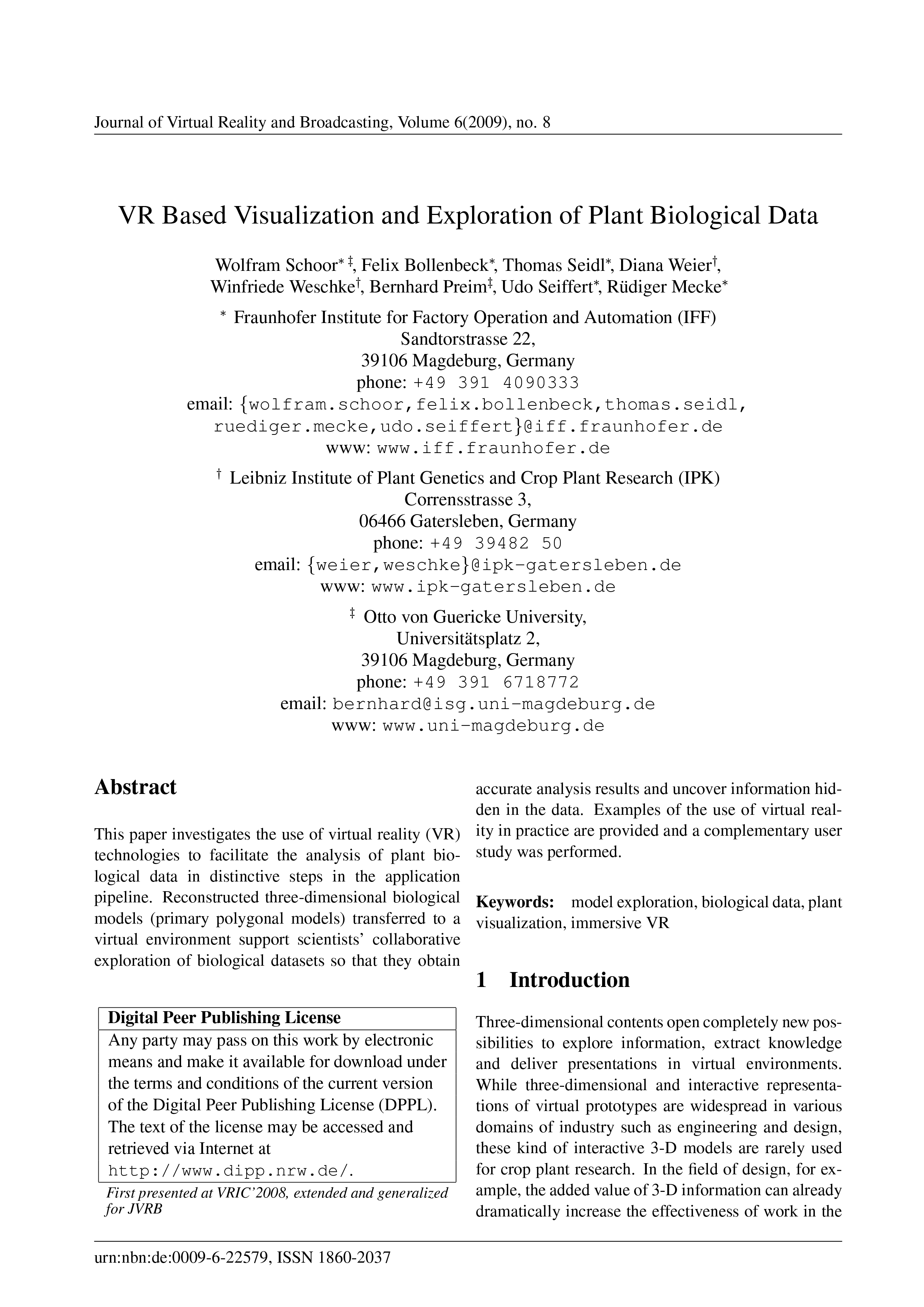VR Based Visualization and Exploration of Plant Biological Data
DOI:
https://doi.org/10.20385/1860-2037/6.2009.8Keywords:
biological data, immersive VR, model exploration, plant visualizationAbstract
This paper investigates the use of virtual reality (VR) technologies to facilitate the analysis of plant biological data in distinctive steps in the application pipeline. Reconstructed three-dimensional biological models (primary polygonal models) transferred to a virtual environment support scientists' collaborative exploration of biological datasets so that they obtain accurate analysis results and uncover information hidden in the data. Examples of the use of virtual reality in practice are provided and a complementary user study was performed.
Published
2010-01-29
Issue
Section
VRIC 2008





